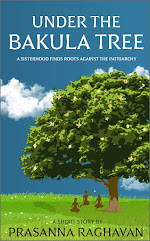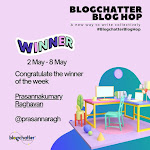Rules of Cause and Effect in Storytelling: Fiction Writing Tips and Bookish Matters.
In this post, the following points are considered.
- Introduction.
- Expecting agency is an evolutionary predisposition not met in the real world in flux.
- Stories act as stimulation. Humans developed storytelling out of learning values to survive in societies, tribes, communities, etc., without experiencing real risks.
- Stories must follow the right order in the story structure.
- Story structure, character motivation, and the law of cause and effect are briefly explained.
- Cause and effect: a rule in organising your story in the correct order.
Introduction:
I have written a few posts under the label, fiction writing tips. A concern was raised last time whether they come under bookish matters, the theme of this group. Both are connected and match, in my opinion.
Authors write stories following the rules for fiction writing. Once the writing is done and the order scrutinised, the books get published, reviewed, and critiqued. The rules the reviewers use to critique the books are not different from those used for storytelling. Hence, the rules of writing and the critiquing tools are no different; they are two sides of a coin. Both are bookish matters.
Expecting agency is an evolutionary predisposition.
Expecting agency in every event or effect is an evolutionary predisposition, which I have explained in an earlier post-Agency in storytelling. This expectation is not materialised as our world is in constant flux. This puts us in a perplexed and unhappy situation where stories can help us.
Stories act as life- simulators.
Stories act as life simulators for learning things without taking risks. When you read books, your brain experiences the same situation or conflicts and the resolution the characters have experienced. They elevate you to a higher level of feel-good as they learn lessons and move forward.
For stories to give us that feel-good, they should follow the rules of storytelling; cause and effect is one such rule. They help to solve problems and promote social values, such as cooperation and friendship, respect for females, care for children and animals, fighting against injustice and inequality, and so on.
Stories must follow the correct order in the story structure.
A simple representation of a story structure is shown below, starting from exposition to resolution. I shall detail it in the next post.
The story starts with exposition and ends with the resolution, all action driven by character motivation. The character's action leads to conflicts and consequences, learning about strengths and weaknesses, and ends in resolutions, and the readers get invested in the story.
To understand the story structure, we need to know a few terms, like the plot, the difference between the plot and the story, settings, character motivation, themes, point of view, subplots, scenes, etc.
We call the story a comprehensive narrative and plot the sequence of events in the story, a description of what happens and why it happens. So, the plot is part of the story. Which also includes the settings, characters, character motivation, themes, points of view, subplots, and other factors that influence the events in the plot.
What is a scene?
A scene is a sequence in which a character or characters engage with action or dialogue. It should have a start, a middle, an end, and a mini-story arc.
Cause and effect: a rule followed in organising the story structure.
A story is a sequence of scenes, and each scene follows from one just before it, which can be compared to the play of the billiard game. A player hits the cue ball to break the triangle of racked balls, and every time a ball hits another, that results in an effect.
In a story, the opening event causes things to splinter apart for the character. This starts a chain of events that are linked and caused by that precedes. Not only every event but every line of dialogue affects what comes next.
The cause is one ball hits the other.
The effect is that the ball rolls across the table.
The stories need to keep order from cause to effect to explain why a character in a story does this and not that. This forms part of how we structure a story. A character takes an action in a certain way that follows a reason or a cause. Or a response follows a stimulus. It cannot be like why a thing happens after the effect.
A story that follows the correct order of cause and effect makes the readers invested in it. If the reader asks why the character did this and not that, then the order of cause to effect is not followed.
If the story moves from effect to cause, the flow will be disrupted, and the readers lose interest in it. The following example explains that the flow is disrupted when the effect follows a cause.
"Reggie walked through the kitchen and opened the cupboard. He was starving and needed some canned ravioli."
Here, the action happened first, and then an explanation followed. This is the cause following the effect. This does not follow the rule of an effect following a cause.
In real life, an action or effect happens first, and we look for the cause. But, in the story, we reverse the action.
Returning to the scene, every scene should follow the one that precedes so as not to upset the flow of the story. As explained before, a story is a succession of scenes, and each scene and each line follows the order of effect follows the cause for the story to be in the right order.
Such stories prompt the readers to follow the same order of action, which improves their own lives and the society at large. We must learn social values promoting cooperation to promote peace and well-being in societies.
The story structure should follow cause-and-effect logic to achieve the above and show the readers how the character learns this cooperation. The main character starts with his rough, antisocial behaviour, then comes across other disagreeing characters or situations to conflict with them. In the end, he resolves to change. This is the logic for preparing a good story structure. In other words, the cause-and-effect technique is essential in a story for the readers to feel happy, learn a lesson from it and feel good.
Conclusion.
A story is a sequence of scenes that follows the order of cause and effect. Once you have completed writing the story, you have to go back and check whether it follows this order from the first scene to the last. Make sure that each line of dialogue and every action the character takes follows this order.
This post is part of the Bookish League blog hop hosted by Bohemian Bibliophile.









32 comments
I am really lucky to read this post Prasanna and see 2 days back we had the session with Harshita and today I am reading post. Just in a short span of time I got to learn a lot about storytelling from two geniuses. Thank You so much and I am saving this post.
ReplyDeleteHi dear, let me correct one thing before I proceed. I am not sharing this info as a genius. I am researching the aspects of story/fiction writing as they involve technical matters, not simply filling the papers or the screen space, to add to what I learned in my creative writing course. This notion struck me hard once I got my debut ebook out; I wanted to make my subsequent work much better than that. I am sharing what I am learning with others and am happy to know they are interested in them. Yeah, I loved that warm informality in the discussion after the main session that day. Yeah, Harishita has published a handful of books :)
DeleteAbsolutely, the cause becomes the conflict which is why there is a story in the first place.
ReplyDeleteHi, thnak you for that observation.
DeleteNice post
ReplyDeleteThis blogpost brings forth the need and the way to organize the story in the right order which is an essential guide for writers.
ReplyDeleteI'm looking forward to learning more about the specific rules of storytelling, particularly the crucial role of cause and effect in organizing a story's narrative structure. It's clear that understanding these principles is essential for crafting compelling and meaningful stories.
ReplyDeleteHi, Kanchan, thank you. Please expect for a detailed stoty structure in the coming post.
DeleteGood tips for crafting stories. Stories are simulators and need a sequence and good narration. I look forward to more tips.
ReplyDeleteThank you, next post will be on the detailed story structure.
DeleteA very interesting comparison on how both readers and writers use the same rules of storytelling to review or write books.
ReplyDeleteHi, thank you for your interest in the post. :)
DeleteYour post give so much valuable insight into the craft of story telling, though I must confess some of it sounded very technical and I had to reread many time sto grasp it. I will also explore your other posts about it.
ReplyDeleteThank you for the input. Story writing is getting technical day by day and it is important to catch up with them. I am also finding it difficult to understand the order and the flow of them and take more time to grasp them. I am sure, things will get better slowly.
DeleteFor someone with no formal exposure to literature and the craft of writing , your posts bring a lot of insight and are very enriching.I do struggle with the technical concepts but it is really helpful.
ReplyDeleteThat's some interesting observations and insights. I'm really impressed by how you pointed out, "A player hits the cue ball to break the triangle of racked balls, and every time a ball hits another, that results in an effect. " because that's the perfect analogy to explain the cause and effect theory which you've explained and emphasized upon later on in the post
ReplyDeleteDear Manali, it is really a great reward to read your observation :)
DeleteThis was an interesting exposition of creative writing related information. Thank you for sharing it.
ReplyDeleteNoor
Hi, thank for reading and appreciating the post.
DeleteI liked the way you took various storytelling techniques and then illustrating them through interactive simulations.
ReplyDeleteThank you, for taking note of them and your like.
DeleteWow. Thanks for sharing this as I am putting finishing touches on a short story of mine for the Blogchatter anthology and these pointers would really help me with my draft. Quite a detailed analysis
ReplyDeleteI am so happy that I am for some help to you, in finishing your BC anthololgy and wishing you well in the challenge.
DeleteThank you for the informative post. Cause and effect, both, if not framed/woven into the narrative properly, the story lacks plausibility.
ReplyDeleteThank you, for your note and observation. :)
ReplyDeleteThese are some valuable tips for those who would want to learn more about story telling. I love how you've broken down into detailed information.
ReplyDeleteIt is a reward in itself to read you are appreciating the writing tips included in my post. Keep on reading, thank you:)
ReplyDeleteThe diagram really resonated - All well-written fiction stories have these elements, and you pointed out, those are the correct order of a story, and that is how a good story is written.
ReplyDeleteThanks for sharing valuable information with us. I am looking forward to more details of story telling in your next post.
ReplyDeleteThank you for the support and the motivation.
ReplyDeleteI am not a writer but it is always interesting to read about story telling techniques. Your writing tips are definitely useful for all the budding and even seasoned writers too. As for bookish matters... let's agree to disagree.
ReplyDeleteHi, thank you, for finding my post-contents interesting and useful in their applications. About the bookish matters, they were my perspectives, not a disagrement with you. :)
DeletePost a Comment